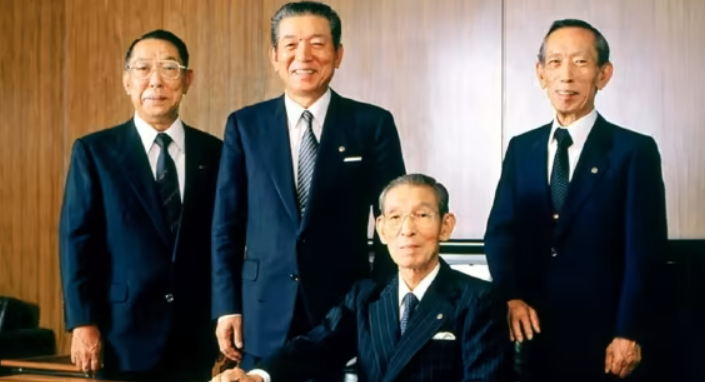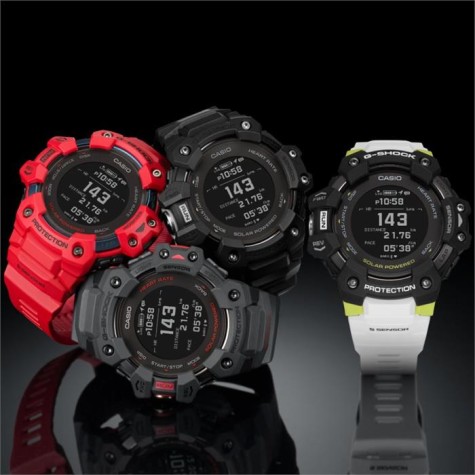How the Kashio Brothers changed the history of calculators
World-renowned Japanese technology brand Casio has made many innovations in consumer electronics for more than 70 years. One of them was calculators.

Tadao Kashio, the founder of the Casio brand and the eldest of the Kashio Brothers, was born in Nankoku, Japan in 1917 to a family that lived on rice farming. After the Kanto Earthquake of 1923, the Kashio family immigrated to Tokyo to work in the rebuilding of the devastated city. However, they did not find what they had hoped for in Tokyo. Construction worker father Shigeru Kashio's income was not enough to meet the family's needs. So much so that his father had to walk to work to cover Tadao's education expenses, he was walking for about 5 hours a day.
Tadao Kashio (1917-1993)
Tadao, who spent his childhood under such difficult conditions, saw the sacrifices made for him. And he dreams of one day doing great things for both his family and Japan. After graduating from high school in 1931, he got a job at a company that recycles oil cans. He soon got a better job at a company that produced medals for soldiers. Admired by his managers for his hard work and dedication, little Tadao became an apprentice operator in the lathe department of the factory. He learned the intricacies of the job in a short time, improved himself and produced good works.
Thereupon, he was sent to Waseda Workers' School (present-day Waseda University) by factory owner Hiroshi Enomoto to deepen his professional knowledge.
Tadao Kashio, who successfully graduated from school and became an engineer, got a job at a radio valve plant. The tuberculosis disease he contracted during this period prevented him from fulfilling his military service. He began to suppress the sadness of not being drafted by working to meet the needs of the Japanese army. During the time he spent in the workshop, he worked on new technologies that would make production easier and higher quality. The special parts he developed for airplanes in the first half of the 1940s showed that Tadao Kashio would make many technological inventions in the future.
In the 1940s, Tadao Kashio honed his engineering skills and started manufacturing aircraft materials in their garden shed. However, II. With the end of World War II, orders for aircraft supplies ceased. Tadao's brothers returning from the military could not find work for a long time. In 1946, Tadao Kashio procured a good milling machine at an affordable price and started producing household items such as frying pan, primus stove, heater. The first product launched by the Kashio Seisakujo company he founded in April was a finger ring that holds a cigarette called a yubiwa pipe. Thanks to the cap attached to the tip of the cigarette, the hands remained empty and the fingers could be used freely while smoking.
Although this invention may seem very simple at first glance, II. After World War II, it attracted great attention among the Japanese, who had great economic difficulties and had to smoke cigarettes at high prices. Having achieved higher sales success than household items with simple mechanisms, yubiwa pipes provided the income that could finance Kashio Seisakujo's new ventures. Tadao Kashio, who has a good entrepreneurial spirit as well as being a good engineer, wanted his brothers to work in his company and believed that he would form a good team with his brothers to expand the business. Toshio Kashio was the first brother to respond positively to the offer.
Toshio Kashio (1925-2012)
With Toshio Kashio joining the company, Kashio Seisakujo turned to electronics. Toshio Kashio, who was interested in electronic products from an early age and was inspired by the Thomas Edison biography he read at the age of 6, set his mind on becoming an inventor. He studied electrical engineering at Tokyo Denki University and worked as a communications engineer at the Ministry of Communications. But due to his passion for inventions, he quit his job and started to spend all his time with inventions. Under Kashio Seisakujo, Toshio Kashio's electronic knowledge and Tadao Kashio's engineering talent combined. This paved the way for the Kashio Brothers to achieve great success in digital technology in the future.
Kashio Brothers and Calculators
The year 1949 was a turning point for Kashio Seisakujo. The calculators they saw at the first Business Show in Tokyo impressed the Kashio Brothers. Until then, calculators were still mechanical and operated by hand using special gears and a crank or engine. However, in the electric calculator they saw at the Business Show, electrical parts were used instead of mechanical parts. Moreover, this calculator, used by an American soldier, was competed with a Japanese accountant using a classical bone abacus, and offended the national pride of the Japanese by turning it into a propaganda tool about America's superiority in technology.
The electric calculator they saw at the Business Show was huge and not easy to use. II. Believing that the rise of Japan after World War II was only possible with technological products, the Kashio Brothers began to think about how they could develop this machine. They believed that if they developed their calculators by combining their electronic and engineering knowledge, they would both achieve great commercial success and be a source of inspiration for the Japanese in competing with strong competitors such as the USA in the technological products market. Toshio Kashio personally led the R&D work on calculators, while Tadao Kashio was responsible for the company's production and sales activities. Tadao Kashio's biggest assistant was their younger brother Kazuo Kashio, who joined the company and became a marketing manager.
Kazuo Kashio (1929-2018)
R&D studies carried out under the management of Toshio Kashio bore its first fruit in 1954 and Kashio Brothers succeeded in making a calculator that works entirely with electronic components. The solenoids they used in this calculator performed the operations of mechanical calculators quickly and easily. Moreover, there were 10 keys on the calculator, and the keys used in calculators to display numbers 100, 1000 and higher until that time had become redundant. Moreover, the number of different screens used in mechanical and electrical calculators was reduced to one, making complex operations quick and easy on a single screen.
In 1957, the Kashio Brothers founded Casio Computer Co., under the leadership of Tadao Kashio, and the Casio 14-A, the world's first all-electric compact calculator based on relay technology, was launched. Working entirely with electrical components, these products played a major role in closing the era of mechanical calculators.
Within the Kashio Brothers, Yukio Kashio has achieved great success in the company's development of mass production technologies. The main reason for these successes was the development of Casio calculators and digital circuits that made it possible to reduce their size and even produce desk and pocket sizes.
In the 1960s, the Kashio Brothers added new features to their electronic calculators and were able to complete more complex mathematical operations quickly and easily. In this way, they made a great contribution to the development of scientific calculators. Launched in 1965, the Casio 001 model became the world's first electronic calculator with a memory function. These products attracted great attention not only in the Japanese market, but also in Europe and America. The first export of the company took place in 1966; By 1969, the total amount of production reached the limit of 100 thousand.
In 1970, the company's shares began to be traded on the Tokyo Stock Exchange. In 1972, the Kashio Brothers reduced the size of calculators even further with the Casio Mini and developed their personal calculators. Entering the wristwatch market in 1974, the company successfully reflected its experience in the field of calculators on wristwatches. With their G-Shock wristwatches and other products, the Kashio Brothers succeeded in turning their calculators into a simple handheld tool. The Casio brand, which has rapidly increased its product range since the 1980s and achieved numerous successes in many product groups from musical instruments to cash registers, from film cameras to digital cameras, continues to exist as one of the strongest players in the consumer electronics market today.

